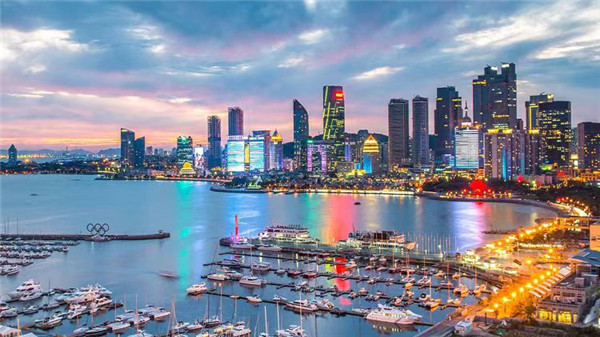Continuous opening-up boosts Qingdao's high-quality development

Qingdao is continuously expanding its openness. [Photo/Dazhong News]
"Openness" has become the defining characteristic of Qingdao, a coastal city in East China's Shandong province.
With its strategic location, Qingdao is not only the largest seaport in the Yellow River Basin but also serves as a maritime gateway for countries around the world to access the inland regions of central and western China. Its openness is one of its biggest strengths.
For many years, Qingdao has been a national leader, continuously expanding its openness and becoming a bridgehead for both Shandong Province's and China's opening-up.
Over the past several decades, Qingdao has been beefing up efforts to advance its "sea-land-air-rail" four-port linkage, developing an international logistics corridor serving the local area and the Yellow River and linking Europe and Asia, thus laying a solid foundation for economic openness and personnel exchanges.
Qingdao has also strengthened shipping routes to countries involved in the Belt and Road Initiative and Regional Comprehensive Economic Partnership member countries, optimized the layout of transoceanic routes to Europe and America, and developed a Northeast Asian international transit channel.
Qingdao has 39 inland ports, 74 sea-rail intermodal routes, and 223 international container shipping routes along the Yellow River Basin. Qingdao Port now has 223 total shipping routes, ranking first in China's northern region in terms of route density and in the competitiveness index of international shipping hubs in Northeast Asia. Last year, the city's total container sea-rail intermodal transportation system shipped 1.88 million standard containers, maintaining its lead among coastal ports nationwide.
Qingdao is also committed to integrating into the new development paradigm, optimizing import and export trade policies, deepening exchanges and cooperation with foreign-invested enterprises, and developing a higher-level single window for international trade, thereby promoting the growth of foreign trade.






